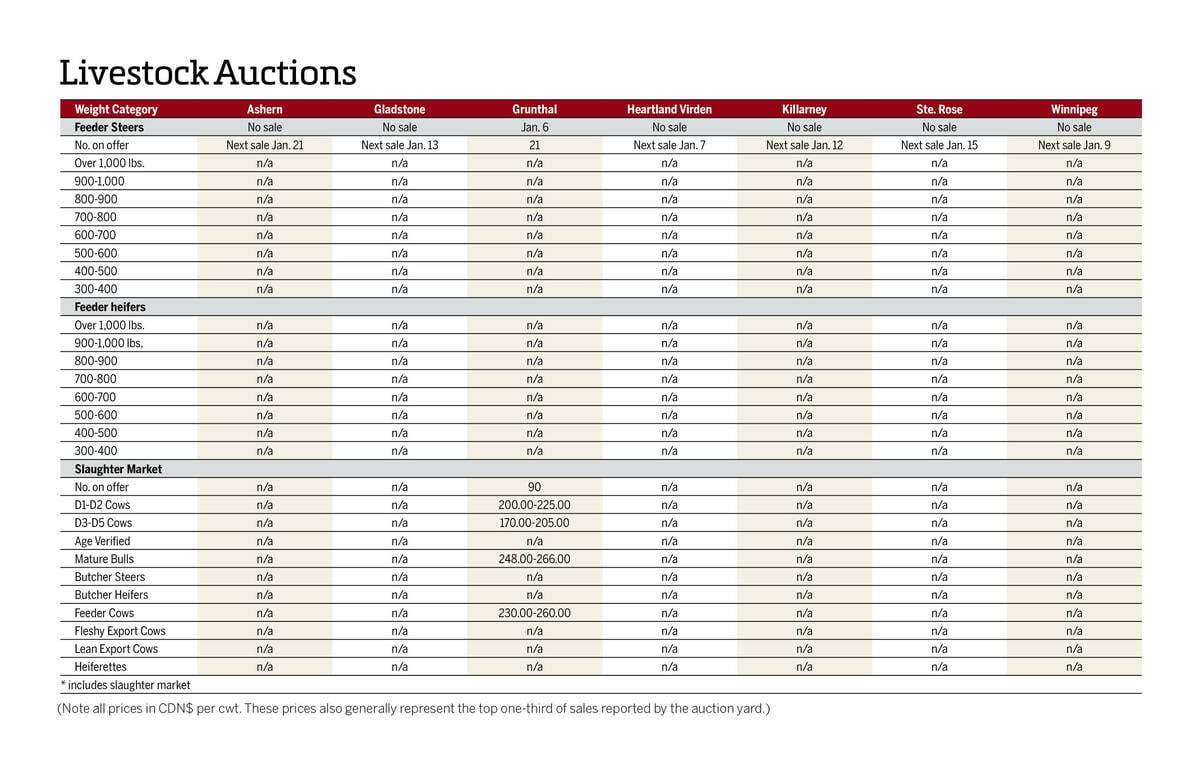The ICE Futures canola market traded within a wide range during the week ended Nov 23. Price moves were exaggerated by thin volumes as the United States Thanksgiving holiday saw many participants move to the sidelines.
The January canola contract briefly tested its 50-day moving average, settling above the key chart point for the first time in over two months. Values have been slowly trending higher for all of November, with the decisive close above that chart point seen as a sign by some analysts that the tide had officially turned back to the upside.
However, the gains failed to hold, and speculators with large net short positions took the opportunity of thin holiday trade to take the market lower again. The January contract was below all its major moving averages and was trading under the psychological $700 per tonne mark by Nov. 24.
Read Also

Manitoba cattle prices Jan. 6
Grunthal was the first Manitoba livestock auction mart to kick off 2026 cattle sales in early January.
While most of the trade in canola was technical, losses in crude oil and improving South American weather conditions contributed to activity in the Canadian oilseed.
Agriculture and Agri-Food Canada released its latest supply/demand estimates on Nov. 21, tweaking its numbers only slightly. Projected canola ending stocks for 2023-24 were left unchanged at one million tonnes, which would still be well below the 1.5 million tonne carryout from the previous year.
Domestic usage is forecast at 10.3 million tonnes, down slightly from 10.7 million tonnes in 2022-23, while exports at 7.7 million tonnes would also be down by about 250,000 tonnes on the year, if realized.
Statistics Canada will release its official production estimates on Dec. 4, which will provide a clearer picture of supplies. The government agency pegged the crop at 17.4 million tonnes in its earlier model-based estimate, which would be down from the 18.7 million tonnes grown in 2022-23. However, anecdotal harvest reports were mixed, so any large adjustments in the StatCan number could have a spillover influence on the futures.
As far as U.S. grains and oilseeds are concerned, most of the corn and soybeans are off the field, and most of the winter wheat crop is in the ground. When traders return after Thanksgiving, the weather in Brazil will be a major factor to watch.
Northern Brazil was dealing with a record heat wave and flooding wreaked havoc on southern parts of the country. That mixed background could lead to choppiness in the futures as traders contemplate which rain forecasts are beneficial for the crops and which will be excessive.
Soybean futures saw a similar up and down trade as canola during the week, while corn held reasonably rangebound. Wheat futures hit contract lows in many months, and speculative selling was a feature as fund traders put on record short positions in the hard red wheat markets.
Spring wheat futures in Minneapolis have lost roughly US$2 per bushel since their August highs, nearing the $7 per bushel mark in the front month contract for the first time in over two years.
















